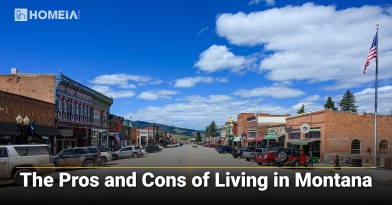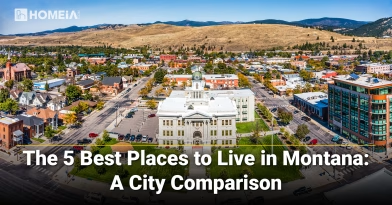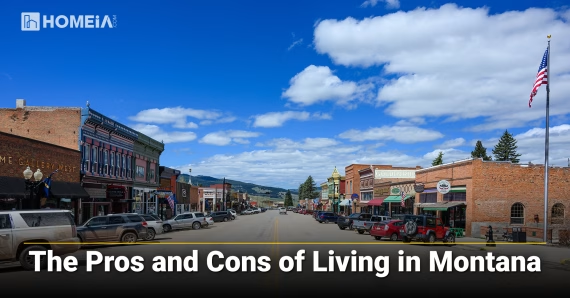Moving to Montana: The Complete Relocation Guide & Checklist
- Local Editor:Local Editor: The HOMEiA Team
Published: Nov 18, 2025
- Category: City Living Guide

Bordered by Canada, Idaho, Wyoming, North Dakota, and South Dakota, Montana offers a lifestyle defined by breathtaking wilderness, rugged independence, and profound natural beauty. Over 1 million residents have found the gold hidden in The Treasure State home, with that being vast open spaces, world-class outdoor recreation, and deep-rooted sense of community. Billings provides urban amenities against a backdrop of the Rimrocks, while hundreds of smaller communities dot a landscape of mountains, plains, and river valleys.
Known for Glacier National Park, Yellowstone River, and iconic Big Sky Country landscapes, this portion of the American West offers more to newcomers—a unique financial structure with no state sales tax, a moderate overall cost of living, and a culture of self-reliance and adventure. Our comprehensive moving to Montana guide covers essential relocation information, from preparing for the climate and understanding costs to navigating the legal requirements of becoming a Montana resident.
Table of Contents:
- Key Takeaways
- I. Methodology: How We Built This Guide
- 1. What Is It Really Like to Live in Montana?
- 2. Cost of Living & Affordability
- 3. Jobs & Economy
- 4. Planning Your Move: A Timeline
- 5. Transportation
- 6. Legal Requirements & Paperwork
- 7. Financial Planning
- 8. Insider Tips from Locals
- Frequently Asked Questions About Moving to Montana
Key Takeaways
- The Moderate Cost of Living: Overall cost of living is approximately 5% above the U.S. average. Housing costs have risen significantly in recent years, particularly in popular mountain towns, while rural areas remain more affordable.
- Diverse Climate Zones: Prepare for a continental climate with four distinct seasons. Western Montana experiences heavy snowfall and cold winters, while eastern regions are drier with greater temperature extremes.
- Specialized Economy: Tourism, agriculture, energy, and healthcare are the state’s economic pillars, offering desirable jobs but often in specific sectors. Remote work opportunities are growing.
- Outdoor Lifestyle: Daily life revolves around access to nature, with world-class fishing, hiking, skiing, and hunting opportunities just minutes from most communities.
- Safety & Infrastructure: Safety ratings are generally high, but some rural areas may have limited access to high-speed internet and specialized healthcare services.
I. Methodology: How We Built This Guide
Our Methodologies to create HOMEiA Score Ratings for Each Group of Content
HOMEiA uses a consistent, data-driven methodology to evaluate U.S. states for livability, affordability, and long-term value. Drawing on data from sources such as the Census Bureau, BLS, Zillow, the Tax Foundation, and FBI crime statistics, this approach supports rankings on cost of living, relocation planning, pros and cons, and best places to live.
1. What Is It Really Like to Live in Montana?

A. Culture & Lifestyle: Montana’s culture is rooted in Western independence, Native American heritage, and appreciation for the land. There’s a shared emphasis on self-reliance, community, and outdoor living. Pace of life is generally slower and more deliberate than in major metropolitan areas. Community events including county fairs, rodeos, and local farmers’ markets are cornerstone activities, providing newcomers with natural opportunities to integrate and experience the state’s authentic character.
B. Arts, Sports, and Entertainment: Western art thrives in communities including Bozeman and Livingston, with numerous galleries and museums celebrating regional artists. Cultural activities include summer theater festivals, music events, and countless local traditions. For sports, Montana has no major professional teams but boasts passionate support for college athletics (Montana State Bobcats and Montana Grizzlies). Outdoor sports are a way of life, from fly fishing and hiking in the summer to skiing and snowboarding in the winter at resorts like Big Sky and Whitefish Mountain. For a look at cultural life in another state, you might explore what it’s like to live in Tennessee.
C. Food Scene & Nightlife: Authentic cuisine celebrates local ingredients including bison, huckleberries, and trout. Farm-to-table dining thrives in cities like Missoula and Bozeman, while smaller towns feature classic steakhouses and local breweries. Nightlife is generally casual and centered around local breweries, distilleries, and community events rather than lavish and extravagant. Craft beer has hopped to the top, with numerous award-winning breweries.
D. Outdoor Recreation & Natural Beauty: Outdoor recreation isn’t just a hobby; it’s central to the Montana identity.
- National Parks & Public Lands: Glacier National Park, Yellowstone National Park (partial), and millions of acres of national forest and BLM land provide unparalleled hiking, fishing, and wildlife viewing.
- Fishing & Hunting: World-class fly fishing on rivers like the Yellowstone, Madison, and Missouri, plus abundant hunting opportunities for elk, deer, and upland birds.
- Winter Sports: Big Sky Resort, Whitefish Mountain Resort, and Bridger Bowl offer world-class skiing and snowboarding.
- Hiking & Camping: Endless trails through mountain ranges including the Beartooths, Absarokas, and Bitterroots.
E. Climate: Montana has several distinct climate zones:
- Western (Missoula, Kalispell): Mountain climate. Unforgiving winters (10°F to 30°F), mild summers (70°F to 85°F). Heavy snowfall in mountains.
- Southwestern (Bozeman, Butte): High mountain valleys. Frigid winters (15°F to 35°F), warm summers (75°F to 90°F). Variable precipitation.
- Central (Helena, Great Falls): Transitional. Cold winters (20°F to 40°F), warm summers (80°F to 95°F). Windy conditions are common.
- Eastern (Billings, Miles City): High plains. Cold winters (10°F to 35°F), hot summers (85°F to 100°F). Dry with greater temperature extremes.
The Pros and Cons of Living in Montana
Montana is more than its majestic mountains and wild beauty—it’s a state where adventure and community thrive. However, challenges like long winters, job scarcity, and isolation exist. This guide explores Montana’s pros and cons, plus its best cities for professionals, families, and retirees seeking life in Big Sky Country.
2. Cost of Living & Affordability
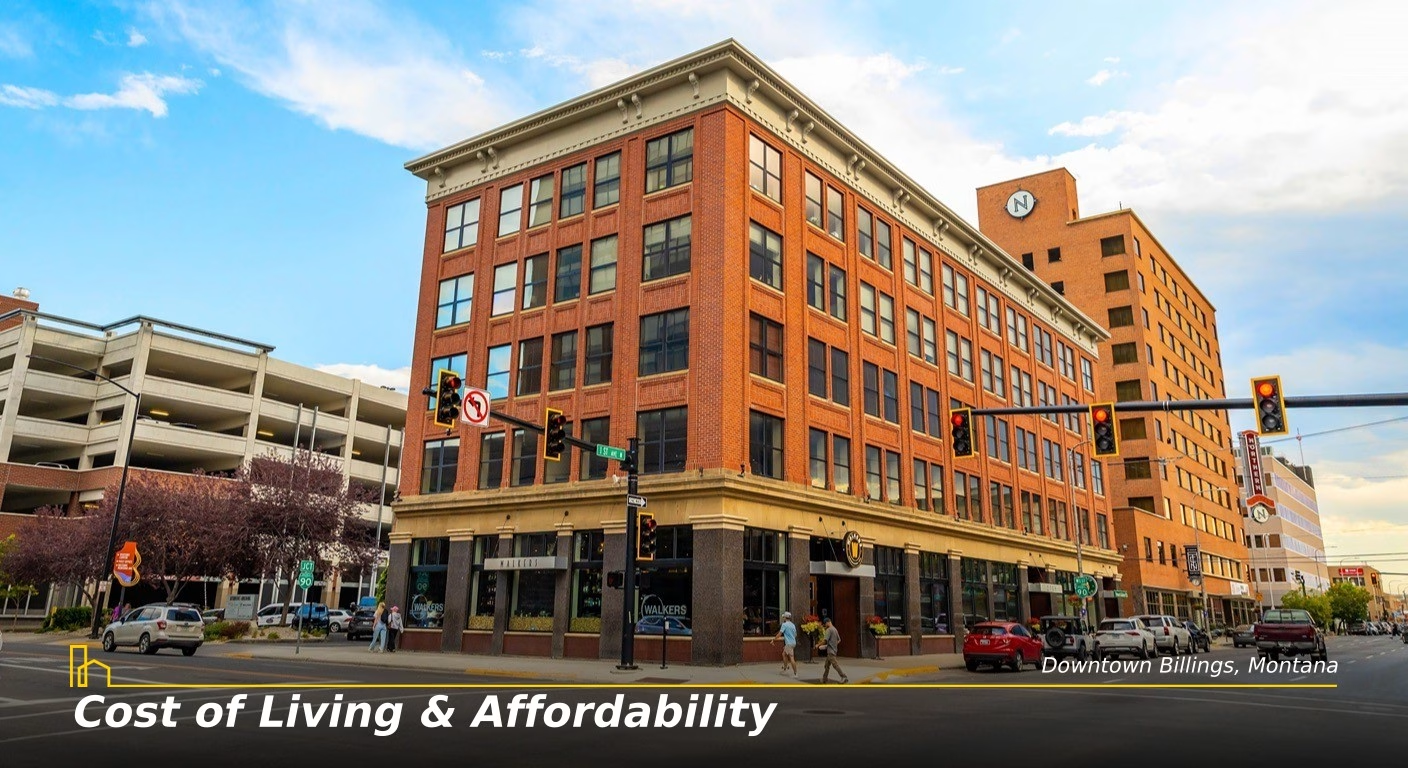
Affordability varies significantly by region. Let’s break down the costs.
A. Housing Market
Housing costs vary dramatically by city and region.
Housing Type | Billings | Bozeman | Missoula | Great Falls | Helena |
|---|---|---|---|---|---|
| Median Home Price | $385,000 | $650,000 | $525,000 | $315,000 | $425,000 |
| Avg. 2-Bedroom Rent | $1,200 | $1,800 | $1,500 | $950 | $1,300 |
B. Daily Expenses
Monthly Expense Category | Average Cost | Notes |
|---|---|---|
| Utilities (HVAC Focus) | $150-$400 | Highly seasonal; winter heating costs can be significant, especially in colder regions |
| Groceries (Family of 4) | $600-$900 | Slightly above national average in more remote areas due to transportation costs |
| Gasoline | ~$3.40/gallon | Prices fluctuate but are often slightly above the U.S. average |
| Internet | $80-$120 | Generally reliable service in cities; can be limited and pricier in very rural areas |
3. Jobs & Economy
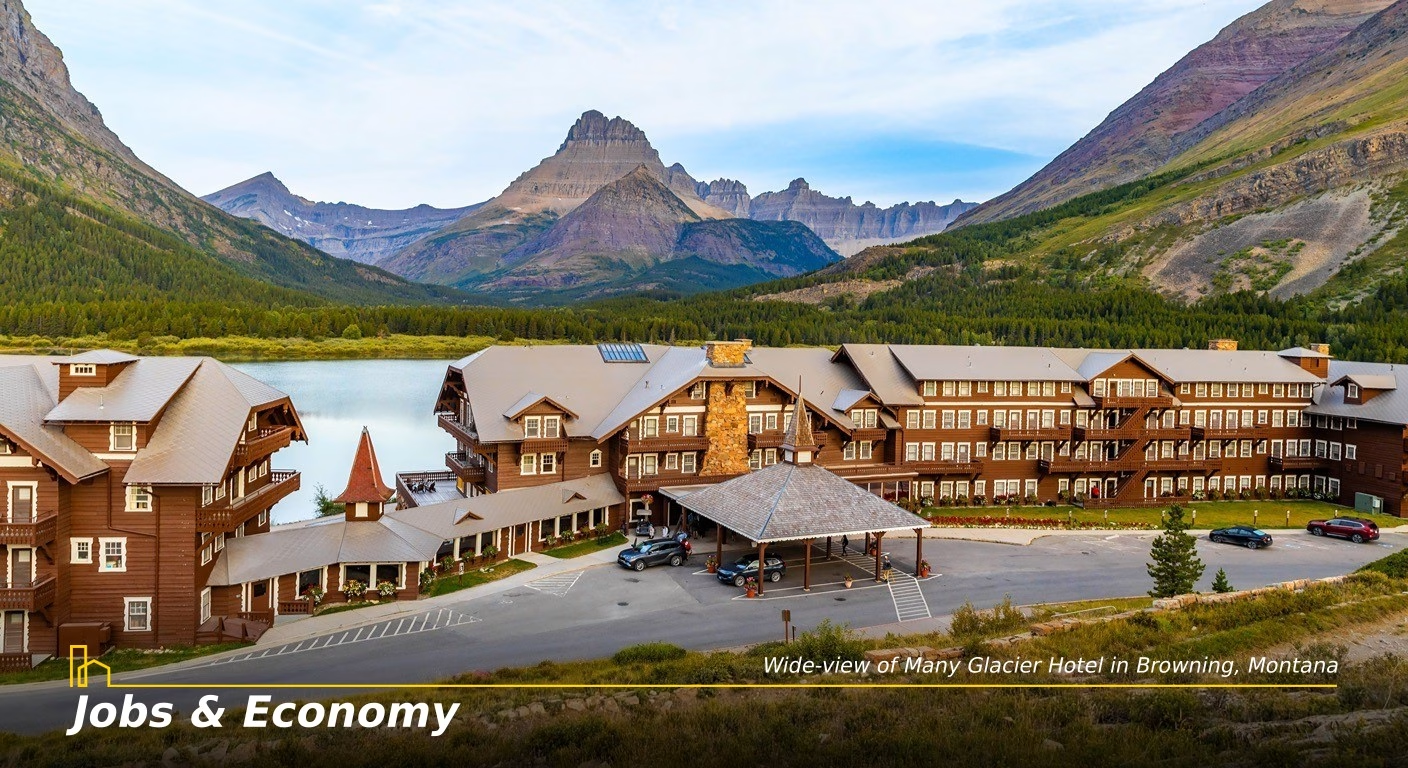
Economy opportunities are driven by several key sectors:
- Tourism & Hospitality: The largest industry, focused on outdoor recreation, national parks, and seasonal visitors.
- Agriculture: Cattle ranching, wheat farming, and barley production are major economic drivers.
- Healthcare & Social Assistance: Growing sector, especially in population centers and retirement communities.
- Energy & Natural Resources: Oil, gas, coal, and renewable energy production, particularly in eastern Montana.
- Remote Work: Growing segment as professionals choose Montana for lifestyle reasons.
Recommended for you
4. Planning Your Move: A Timeline

A successful move requires planning, especially if coming from a great distance.
Timeline | Essential Tasks | Important Details |
|---|---|---|
| 8-12 Weeks Before | Plan & Research | Get moving quotes, create budget, research new state laws, start decluttering |
| 6-8 Weeks Before | Notify & Pack | Give notice to your landlord, collect boxes, pack off-season items, transfer medical files |
| 4-6 Weeks Before | Transfer Services | Schedule utility shutoff/start, file USPS change of address, find new doctors, register kids for school |
| 2-4 Weeks Before | Finalize Details | Finish packing, plan travel route, confirm mover schedule, fill prescriptions |
| 1-2 Weeks Before | Prepare to Go | Pack essentials box, defrost fridge, clean home, confirm utility dates |
| Moving Day | Execute Move | Oversee loading, do final walkthrough, keep documents handy |
| After Arrival | Settle In | Unpack basics first, update license/registration, explore new town |
=> Get the Relocation Guide & Checklist PDF — prepared for both Desktop and Mobile devices.
5. Transportation
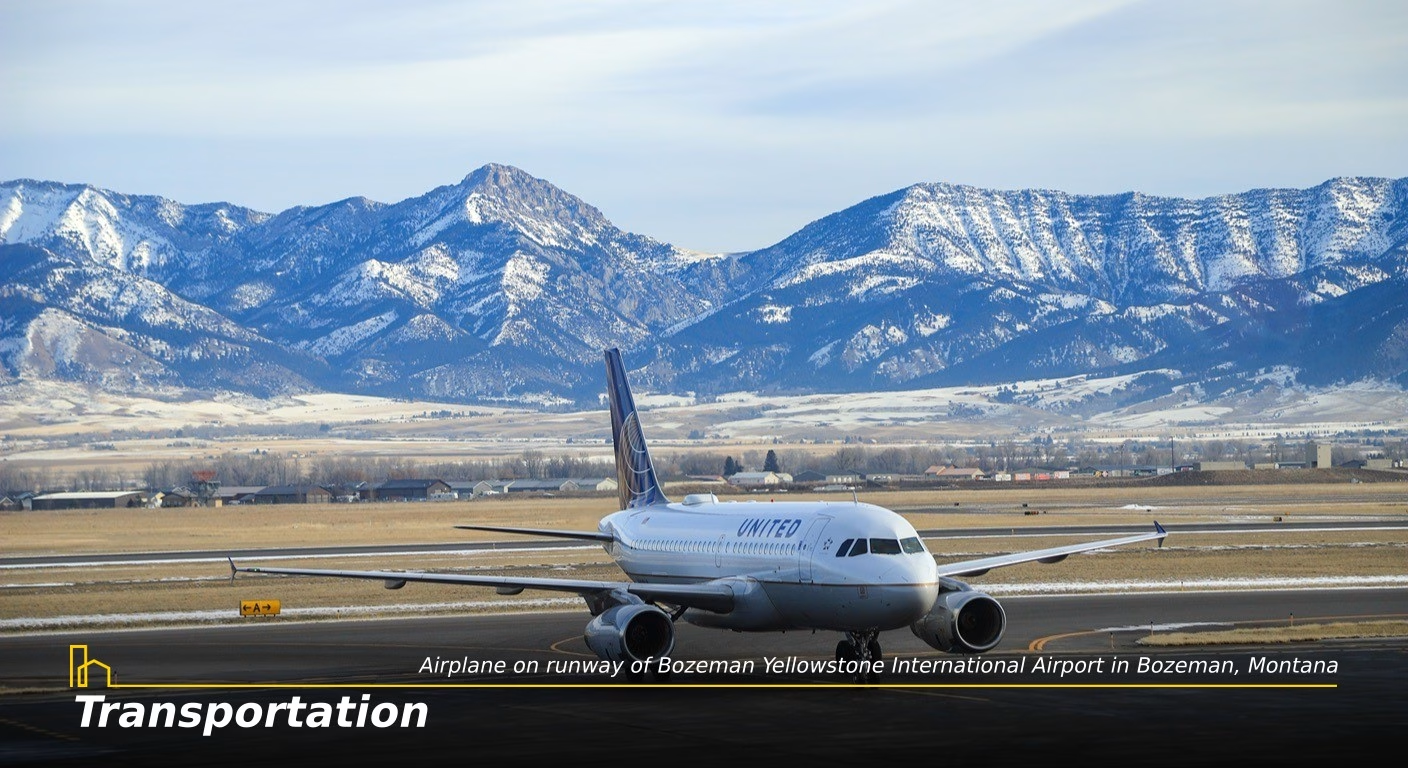
- Driving: I-90 runs east-west across southern Montana, and I-15 runs north-south through the western part of the state. These are the state’s primary transportation corridors. Rural communities stay connected by state highways, but remote areas can be isolated, especially in winter.
- Flying: Major airports in Billings (BIL), Bozeman (BZN), Missoula (MSO), and Kalispell (FCA) offer connecting flights to hub cities. Smaller regional airports serve other communities.
- Public Transit: Limited to nonexistent outside major cities. Cars are essential for most residents. Some cities have local bus systems, but coverage is limited.
- Winter Driving: From October to April, winter tires or all-weather tires are essential. Carry an emergency kit including blankets, food, water, and traction aids. Mountain passes can close during severe weather.
Montana combines stunning scenery with surprising affordability, featuring low housing costs and no state sales tax. This guide highlights seven of the most budget-friendly Montana communities for 2025, analyzing housing, utilities, and transportation to help you find financial stability without losing Big Sky Country’s authentic outdoor charm.7 Most Affordable Places to Live in Montana
6. Legal Requirements & Paperwork
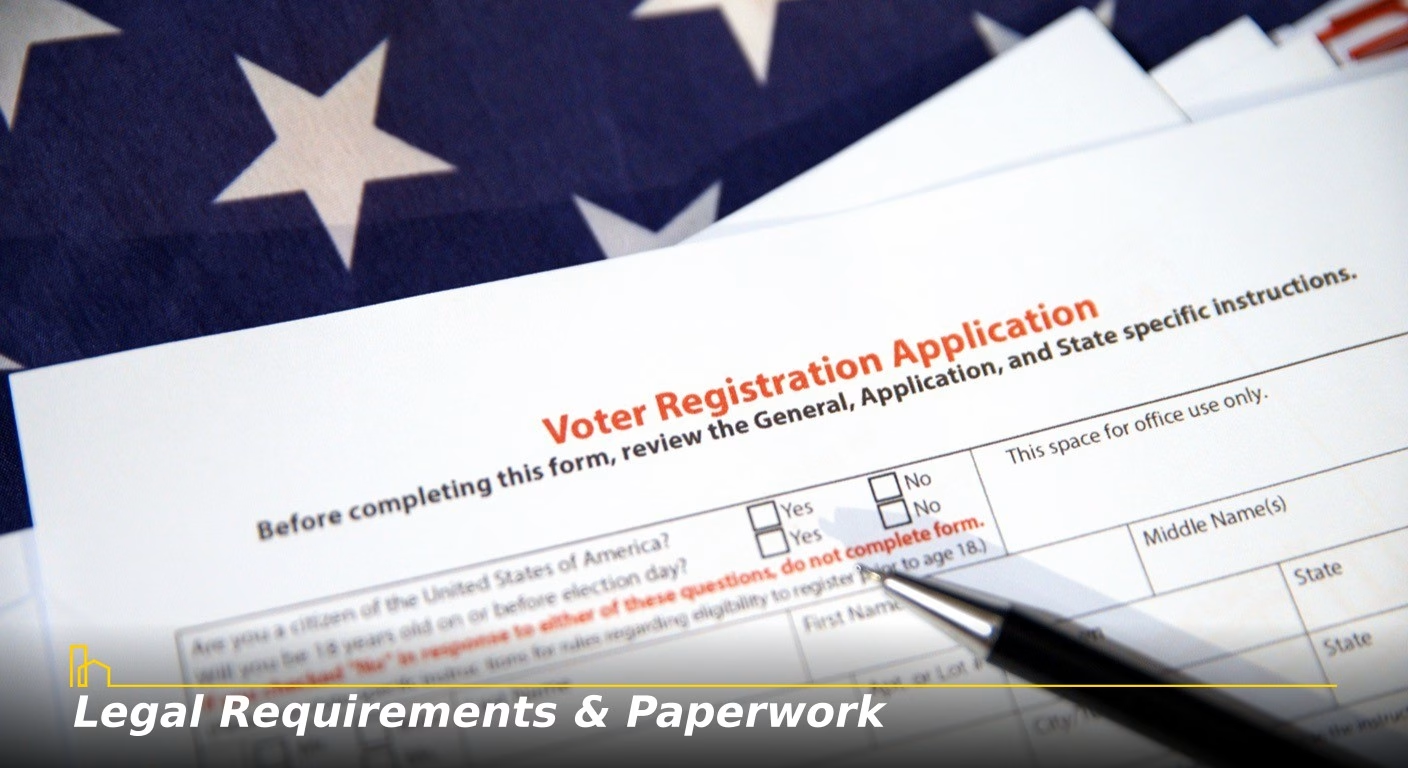
New residents must complete several tasks:
- Vehicle Registration: Required within 60 days of establishing residency. You’ll need your out-of-state title, proof of MT insurance, and a VIN inspection.
- Driver’s License: Required within 60 days. You must surrender your previous license. Proof of identity, residency, and Social Security Number are required.
- Voter Registration: Registering to vote can occur when applying for your driver’s license or separately at county election offices.
- Other: If you plan to hunt or fish, you will need to purchase a state license. Firearm regulations are generally permissive, but check local ordinances.
7. Financial Planning

Create a realistic budget accounting for moving expenses (moving truck or pod rental, travel). Keep housing expenditures below 30% of your income. Build a healthy emergency fund (3-6 months) due to the state’s seasonal economy and potential for weather-related disruptions. Take advantage of the lack of state sales tax, but budget for potentially higher property taxes in some areas.
The 5 Best Places to Live in Montana: A City Comparison (updated)
Montana blends rugged wilderness with welcoming communities, offering endless opportunities for outdoor living and growth. This guide spotlights the five best Montana cities to live in 2025, based on affordability, opportunity, safety, and quality of life—from vibrant Missoula to scenic Bozeman—helping you find your perfect Rocky Mountain home.
8. Insider Tips from Locals
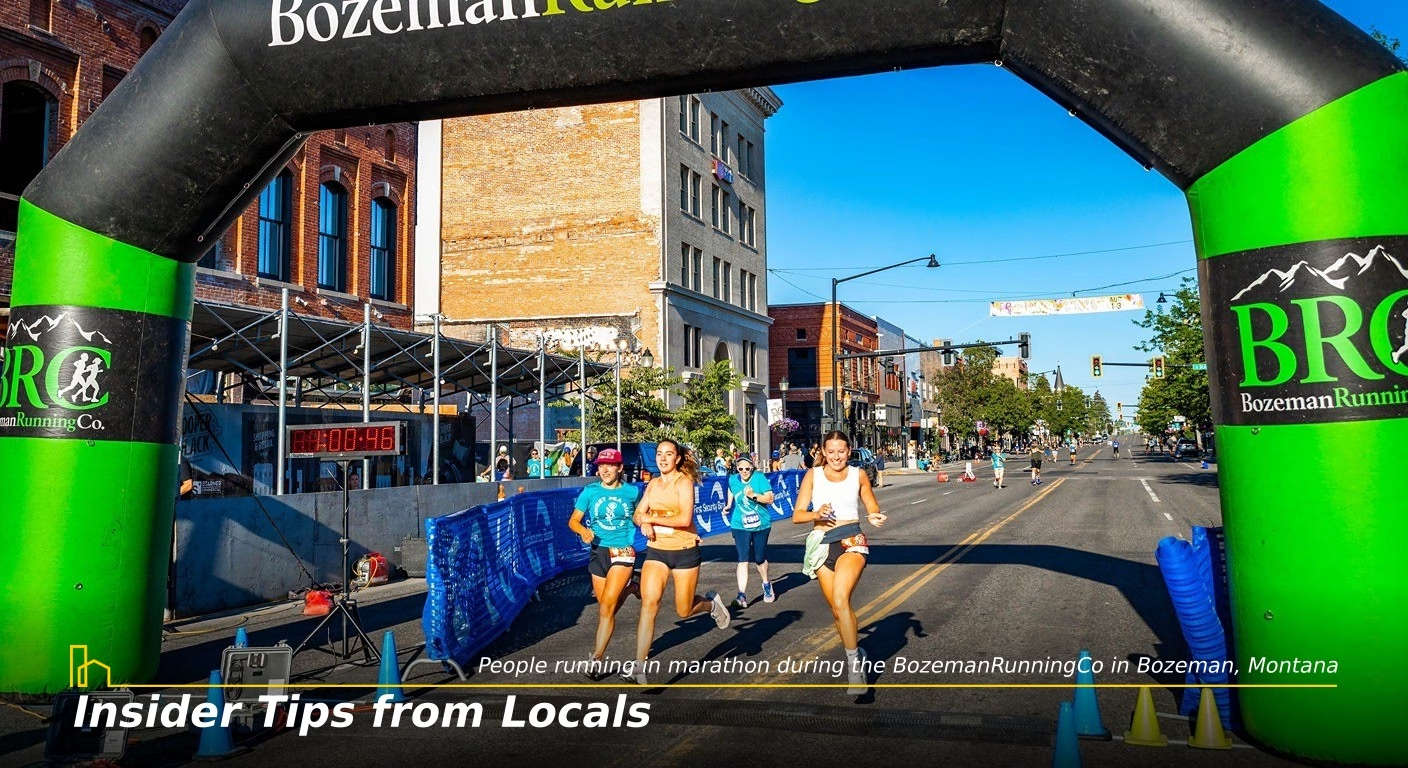
- Prepare for Winter: Invest in quality winter gear including insulated boots, warm layers, and reliable vehicle tires. Learn winter driving skills before you need them.
- Embrace the Seasons: Each season offers unique opportunities—summer hiking, fall hunting, winter skiing, spring fishing. Learn to appreciate them all.
- Get Outside: The best way to socialize is through shared outdoor activities. Join hiking groups, fishing clubs, or volunteer for trail maintenance.
- Support Local: Farmers’ markets, local artisans, and small businesses are the heart of Montana communities. Supporting them builds connections.
- Be Self-Reliant: Basic home and vehicle maintenance skills are valuable, as services can be limited in rural areas.
Conclusion
Moving to Montana is an embrace of unique living centered around nature, community, and independence. The transition demands preparation for climate extremes and rural living conditions. The rewards, however, are immense: unparalleled access to wilderness, strong communities, and the freedom of wide-open spaces. With thorough preparation and an adaptable mindset, your relocation to Big Sky Country can be the start of a deeply rewarding adventure. For those still considering options, our guide on moving to Colorado might provide an interesting comparison.
Recommended for you
Frequently Asked Questions About Moving to Montana
1. What is the first step to moving to Montana? The absolute first step is to secure housing. Rental and real estate markets can be competitive, especially in popular areas, and having this secured will make your transition smooth. If needing employment, begin your job search proactively.
2. Should I drive or ship my car to Montana? Driving is almost always the most practical option. MT is accessible via major interstates (I-90 and I-15), and having your own vehicle is essential for daily life. Shipping a car can be expensive and is generally unnecessary unless you cannot drive the distance.
3. How do I get my belongings to Montana? For large moves, using a national moving company or renting a truck is common. Pod-like services are available but may have limited service areas in very rural locations. For smaller loads, using a freight service or driving a rented trailer can be cost-effective.
4. What should I pack vs. buy there? Bring all essential documents, specialized outdoor gear, and personal items. Everyday household items, furniture, and bulky goods are better purchased in Big Sky Country to avoid high moving costs. Winter clothing and gear are essential—bring what you have or plan to purchase upon arrival.
5. Is it hard to make friends in Montana? Generally, no. Montanans are famously friendly but value authenticity. The best way to meet people is through shared interests, particularly outdoor activities. Join community groups, volunteer for local organizations, or participate in recreational sports to build connections quickly.
For more relocation insights, explore our guides on moving to Minnesota, moving to Texas, moving to Florida, moving to California, and moving to Utah. If you’re considering other Western states, check out our guides on the pros and cons of living in Colorado or the pros and cons of living in Wyoming.
Table of Contents:
- Key Takeaways
- I. Methodology: How We Built This Guide
- 1. What Is It Really Like to Live in Montana?
- 2. Cost of Living & Affordability
- 3. Jobs & Economy
- 4. Planning Your Move: A Timeline
- 5. Transportation
- 6. Legal Requirements & Paperwork
- 7. Financial Planning
- 8. Insider Tips from Locals
- Frequently Asked Questions About Moving to Montana
HOMEiA is a city guide site where visitors can find detailed information about communities of interest. HOMEiA’s City Guides, created in partnership with local writers and editors, are curated lists of the best, safest, and most affordable places to live. The guides feature the HOMEiA Score, a proprietary index that rates communities on such factors as housing costs, education, employment, etc.
HOMEiA.com aims to be the premier site for people planning to relocate, providing them with insightful content and connecting them with skilled real estate professionals.
We also empower real estate professionals to establish or strengthen their web presence by highlighting their experience, knowledge and achievements. If you’re selected to join our list of certified real estate professionals, you will distinguish yourself from your peers — and earn HOMEiA’s support.
If you believe in HOMEiA’s mission, please share our website with others.
Table of Contents:
- Key Takeaways
- I. Methodology: How We Built This Guide
- 1. What Is It Really Like to Live in Montana?
- 2. Cost of Living & Affordability
- 3. Jobs & Economy
- 4. Planning Your Move: A Timeline
- 5. Transportation
- 6. Legal Requirements & Paperwork
- 7. Financial Planning
- 8. Insider Tips from Locals
- Frequently Asked Questions About Moving to Montana


